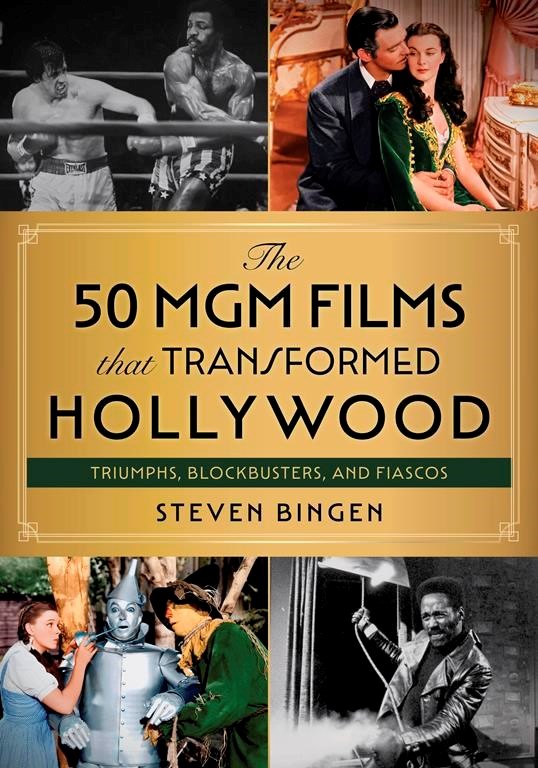“The 50 MGM Films that Transformed Hollywood: Triumphs, Blockbusters, and Fiascos,” by Steven Bingen (Lyons Press)
The title of film historian Steven Bingen’s new book is reminiscent of B-movie trailers of the 1950s that breathlessly hype “The Most Important Picture of the Year!” But like many of those overripe flicks, “The 50 MGM Films that Transformed Hollywood” can be entertaining, too.
The qualifications for getting on the list are surprisingly squishy. Bingen doesn’t limit himself to the “real” Metro-Goldwyn-Mayer productions created by or inside the legendary Culver City studio ruled by moguls like Louis B. Mayer. He writes as if any milestone in MGM’s journey — success or failure, trendsetter or swan song — is transformative given MGM’s starring role in Hollywood history.
He also counts “films” as theatrical releases, television productions, cartoons and documentaries financed, distributed or later acquired by MGM throughout its corporate history. That means MGM stalwarts like “The Wizard of Oz” (1939) and “Forbidden Planet" (1956) sit side by side with “Dr. No” (1962), first of the James Bond films released by United Artists but acquired years later by MGM. Stepfathers don’t get credit for raising children if they’re already out of the house.
Such dings aside, Bingen’s book offers thoughtful essays sprinkled with fun trivia:
— The first “official” MGM production was the bizarre silent feature “He Who Gets Slapped” (1924) in which Lon Chaney plays a disturbed clown whose entire act is… getting slapped.
— “White Shadows in the South Seas” (1928), filmed in Tahiti, was a forerunner of expensive location shoots and featured the first audible roar from MGM’s Leo the Lion.
— Despite being the first big-budget feature with an all-Black cast, “Hallelujah” (1929) succumbs to many of the stereotypes of its day. However, leading lady Nina Mae McKinney’s star-turn landed her the first five-year contract for any Black actor.
— “Freaks” (1932) was a proto-cult film, so unsettling with its cast of real-life human oddities that it cratered financially. At the other end of the box office spectrum that year, the hit “Grand Hotel” (1932) popularized the “all-star cast.”
— The highly profitable Andy Hardy series of 15 films over 10 years starring Mickey Rooney was a grandfather of the TV sitcom. The fourth, “Love Finds Andy Hardy” (1938), may have been the best.
— The stars of “Puss Gets the Boot” (1940), a cat-and-mouse animated short designed to compete with Disney and Warner Bros. cartoons, were eventually refined and renamed Tom and Jerry.
Bingen’s best analyses come when he sidesteps the chronology to juxtapose related films to achieve greater salience for both, such as examining the divergence between the World War II standard “Battleground” (1949) and the more elegiac “The Red Badge of Courage” (1951). Listed separately are the pro-British “Mrs. Miniver” (1942) and the pro-Soviet “Song of Russia” (1944). Both naked propaganda, the former landed its writers an Oscar while the latter helped land its writers on the blacklist.
“50 MGM Films” can descend into flabby writing and occasional errors. For instance, the Frank Sinatra fans who bedeviled production of “On the Town” (1949) were “bobby-soxers,” not “teenyboppers.” The Robert Taylor film “Quo Vadis” (1951) was not a “gladiator epic.” And by no means was HAL 9000 a “robot” in “2001: A Space Odyssey” (1968).
Hardcore aficionados and budding cinephiles alike can enjoy Bingen’s informed take on titles that often show up on the cable channel TCM. “50 MGM Films” proves that strands of the studio’s corporate and creative DNA continue to influence today’s entertainment.
___
Douglass K. Daniel is the author of “Anne Bancroft: A Life” (University Press of Kentucky)
Douglass K. Daniel, The Associated Press


